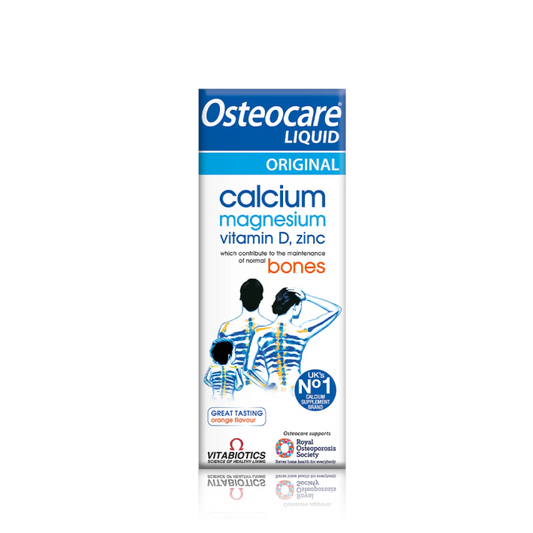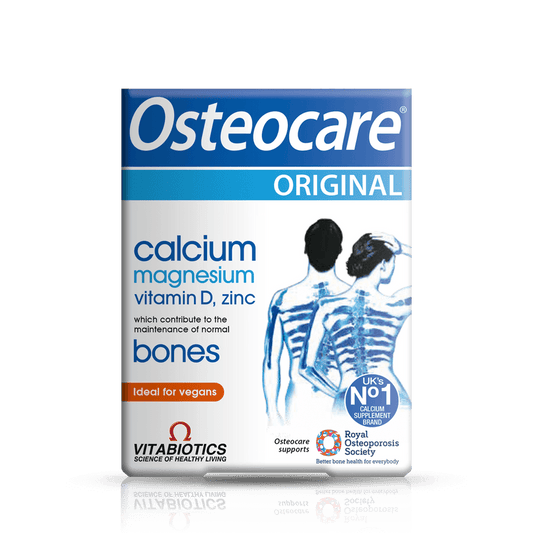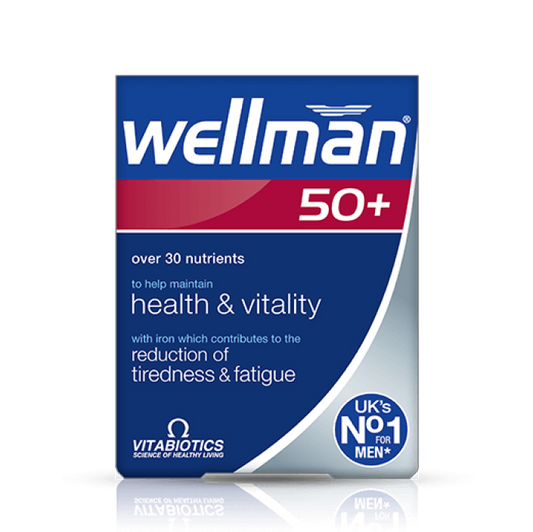Although needed in trace amounts, selenium plays a fundamental role in maintaining overall health and well-being. Often overlooked in discussions about nutrition, this trace mineral is essential for many bodily processes to function properly. From basic chemistry to its impact on immunity and disease prevention, selenium deserves your attention. In this blog post, we’ll delve deeper into selenium, revealing its importance for your health.
Selenium - more than just a number on the periodic table
Chemical identity of selenium
Selenium (Se) is a nonmetal belonging to the chalcogen group (group 16) in the periodic table. Its atomic number is 34 and its atomic mass is about 79 atomic mass units. At room temperature, it is solid and can take on various allotropic forms, including gray (metallic, α), red (amorphous, β), and black (glassy or amorphous). The most stable form is gray selenium, which is characterized by a silver-gray color and brittleness. The density of selenium is about 4.8 g/cm³, and its melting point is about 220°C, while its boiling point is about 685°C. Chemically, selenium is similar to sulfur. Its common oxidation states are +II, +IV, and +VI.
The fact that selenium occurs in different allotropic forms with different properties indicates its complex nature at a basic level. This complexity probably contributes to the diversity of its roles in biological systems. Different forms of selenium can be used by the body in specific ways, which underlines its importance.
A Glimpse into History - The Discovery of Selenium
Selenium was discovered in 1817 by Swedish chemist Jöns Jacob Berzelius. The name of the element comes from the Greek word "Selene", meaning Moon, which is related to its discovery in the company of tellurium, named from the Latin word "tellus", meaning Earth. Berzelius noticed the new element as a by-product in the production of sulfuric acid from pyrite (iron sulfides).
The naming of selenium for the Moon, in conjunction with tellurium being named for the Earth, provides an interesting anecdote that may interest the reader and illustrate the early understanding of these elements as related but distinct. This historical background adds depth to the information about selenium.
What is selenium and what role does it play in the human body?
The role of selenium as a trace element
Selenium is an essential trace element, meaning that the body needs it in small amounts but cannot produce it on its own. For this reason, it must be supplied to the body through the diet.
Selenium as a component of selenoproteins
The primary biological role of selenium is its presence in various proteins called selenoproteins. There are many different selenoproteins in the human body, each of which has specific functions. Selenocysteine is a unique amino acid containing selenium, which is crucial for the activity of these proteins. Examples of important selenoproteins and their functions include:
- Glutathione peroxidase: Plays an important role as an antioxidant enzyme, protecting cells from damage caused by free radicals.
- Deiodases: are involved in the activation of thyroid hormones (conversion of T4 to T3), which are necessary for the regulation of metabolism.
Selenomethionine is another form of selenium found in the body, often considered a storage form.
The fact that selenium is an integral part of selenoproteins underlines its fundamental importance at the molecular level. These proteins participate in critical processes such as antioxidant defense and thyroid hormone regulation, demonstrating the far-reaching impact of selenium on health.
What are the health benefits of selenium?
Strong antioxidant protection
Selenium is a key antioxidant that helps neutralize harmful free radicals and protect cells from oxidative stress. This antioxidant activity may help prevent chronic disease and slow the aging process. Selenium works synergistically with other antioxidants, such as vitamin E.
Selenium’s powerful antioxidant properties make it a key element in the fight against oxidative stress, a process linked to numerous chronic diseases. This underscores its potential role in disease prevention and overall longevity.
Strengthening the immune system
Selenium supports the proper functioning of the immune system, strengthening the body's ability to fight infections. It plays a role in the activity of immune cells, such as lymphocytes and macrophages. Adequate selenium levels can improve the body's response to viral infections.
The contribution of selenium to the functioning of the immune system suggests that maintaining sufficient levels is particularly important for overall resistance to infections and maintaining a strong defense system.
The Key to a Healthy Thyroid
Selenium plays a key role in thyroid health, especially in the conversion of inactive thyroid hormone T4 to active T3. It also helps protect the thyroid from oxidative damage during hormone production. Selenium is important for conditions such as Hashimoto’s thyroiditis, where supplementation has been shown to reduce thyroid antibodies (anti-TPO) and improve mood.
The high concentration of selenium in the thyroid gland and its direct involvement in thyroid hormone metabolism underscore its critical importance in maintaining healthy thyroid function, which in turn influences numerous processes occurring in the body.
Other potential health benefits
Research also suggests other potential health benefits of selenium, such as:
- Cardiovascular health: protection of blood vessels from damage and influence on blood lipid profile.
- Brain health: Supporting cognitive function and potentially reducing the risk of neurodegenerative diseases such as Alzheimer's.
- Fertility: Contributes to normal sperm production in men.
- Mood: Potentially improve mood and reduce symptoms of depression.
- Cancer prevention : Some studies suggest an association between adequate selenium intake and a reduced risk of certain cancers.
- Detoxification: supporting the body's detoxification processes.
- Skin and Hair Health: Contributing to the health of your skin and hair.
The wide range of potential health benefits beyond antioxidant, immune, and thyroid support suggest that selenium plays a multifaceted role in maintaining overall well-being, warranting further research in these areas.
This may be useful to you: Ultra Selenium selenium tablets
What are the dietary sources of selenium?
The best sources of selenium in your diet
Selenium is found in many foods of both animal and plant origin.
Animal sources:
- Seafood: Oysters, tuna, salmon, mackerel, sardines, halibut, shellfish
- Meat and poultry: Beef, pork, chicken, turkey, offal (liver, kidney)
- Dairy and eggs : Eggs, milk, cheese, yogurt
Plant sources:
- Nuts and Seeds: Brazil nuts (richest known source), sunflower seeds, pumpkin seeds, walnuts, cashews.
- Cereals and legumes: Whole grains (wheat, oats, barley, rice), wheat bran, oat bran, lentils, chickpeas, beans.
- Vegetables: Garlic, onion, broccoli, mushrooms, spinach.
The variety of selenium sources in different food groups makes it possible to obtain adequate amounts through a balanced diet, although some sources, such as Brazil nuts, are particularly rich in this element.
The influence of geography on selenium content
The selenium content of plant foods is strongly dependent on the selenium level in the soil in which they are grown. Particularly noticeable are the significant differences in the selenium content of Brazil nuts, depending on the country of origin (e.g. Bolivia, Brazil, Peru). For example, the selenium content of one Brazil nut (5 g) can range from 8 µg if the nuts come from Bolivia to 130 µg in the case of nuts from northern South American countries. Some regions are characterized by soils poor in selenium, which can affect the overall selenium intake of the population living in these areas.
Geographic variability in selenium content, especially in plant foods, highlights the importance of considering the origin of food sources when trying to increase selenium intake. It also explains why deficiency may be more prevalent in some regions.
|
Product |
Selenium content in 100 g (µg) |
Percentage of daily requirement (approximate) |
Country of origin (for Brazil nuts) |
|
Brazil nuts |
160 |
291% |
Bolivia |
|
Brazil nuts |
360 |
655% |
Brazil |
|
Brazil nuts |
660 |
1200% |
Peru |
|
Tuna in oil (drained) |
60.1 |
109% |
- |
|
Wheat bran |
77.6 |
141% |
- |
|
Sunflower seeds |
53 |
96% |
- |
|
Pork, leg |
54.8 |
99% |
- |
|
Pasta |
57.5 |
105% |
- |
|
Wheat flour |
35.3 |
64% |
- |
|
Chicken egg |
31.7 |
58% |
- |
|
Cottage cheese (various types) |
30 |
55% |
- |
|
Wheat |
29 |
53% |
- |
|
Chickpea |
28.5 |
52% |
- |
|
Rye |
25.8 |
47% |
- |
|
Beans |
24.9 |
45% |
- |
|
Oat |
23.8 |
43% |
- |
|
Parmesan |
22.5 |
41% |
- |
|
Barley |
22.1 |
40% |
- |
|
Rice |
20 |
36% |
- |
|
Garlic |
14.2 |
26% |
- |
Note: The percentage of daily requirements is a guideline, based on the recommended daily dose of 55 µg for adults, and may vary depending on individual needs.
What are the symptoms and causes of selenium deficiency?
Common symptoms of selenium deficiency
Selenium deficiency can manifest itself through a variety of symptoms:
- Fatigue and weakness
- Muscle weakness and pain
- Hair loss and brittle nails
- Weakening of immune system function and increased susceptibility to infections
- Thyroid problems, including hypothyroidism
- Concentration problems and "brain fog"
- Fertility problems in women and men
- Inflammation of the skin and skin lesions
- Mood disorders, including depression and anxiety
- In rare cases, the development of Keshan disease (heart disease) and Kashin-Bek disease (bone and joint disease)
The wide range of seemingly unrelated symptoms underscores the systemic importance of selenium in the body. Deficiency can manifest in many ways, making diagnosis difficult without proper testing.
This may be useful to you: Ultra - vitamins and minerals for daily supplementation
Who is at risk of selenium deficiency?
There are groups of people who are more susceptible to selenium deficiency:
- People living in regions with selenium-poor soils
- Vegans and vegetarians
- People with gastrointestinal disorders that impair nutrient absorption (e.g. Crohn's disease, short bowel syndrome)
- Patients with renal failure undergoing dialysis
- People with HIV/AIDS
- People with certain genetic disorders of selenium metabolism
- Elderly people
- Pregnant and breastfeeding women (due to increased demand)
- People with autoimmune diseases
Understanding risk groups allows for targeted attention to dietary selenium intake and potential supplementation, particularly in individuals with existing medical conditions or specific dietary habits.
How does excess selenium affect the body?
Symptoms of Selenium Overdose (Selenosis)
Consuming excessive amounts of selenium can lead to toxicity, known as selenosis. Symptoms of overdose may include:
- Garlic Breath
- Hair loss
- Brittle and discoloured nails, potentially with loss of nails
- Gastrointestinal problems: nausea, vomiting, diarrhea, abdominal pain
- Fatigue and irritability
- Skin rashes and skin lesions
- Nervous system problems such as tremors or numbness
- In severe cases, potentially leading to pulmonary edema, liver and kidney damage, heart attack and even death.
- Unpleasant taste in the mouth (metallic or sour)
- Tooth decay
- Joint pain
The serious symptoms associated with selenium toxicity, ranging from mild gastrointestinal problems to severe organ damage and even death, underscore the importance of following recommended intake levels and avoiding over-supplementation.
Tolerable Upper Intake Level (UL)
The tolerable upper intake level of selenium in adults is considered to be 400 micrograms per day. Exceeding this limit may increase the risk of adverse effects.
Establishing an upper intake limit provides a clear guideline for safe selenium intake, helping to avoid potentially harmful levels.
Recommended daily intake of selenium
The recommended daily intake of selenium varies by age and population group. The table below provides a summary of the recommended doses based on available information:
|
Age Group/Population |
Recommended daily intake (µg) |
|
Babies (0-6 months) |
15-20 |
|
Babies (7-12 months) |
20 |
|
Children (1-3 years) |
20 |
|
Children (4-6 years old) |
30 |
|
Children (7-9 years old) |
30 |
|
Children (10-12 years old) |
40 |
|
Youth (13-15 years old) |
55 |
|
Youth (16-18 years old) |
55 |
|
Adults (19+ years) |
55 |
|
Pregnant women |
60-70 |
|
Breastfeeding women |
70 |
It is important to remember that in case of deficiencies, supplementation may be necessary, but should always be done under the supervision of a doctor. It is important not to exceed the upper limit of intake of 400 µg per day to avoid toxicity.
The varying demand for selenium at different stages of life underlines the importance of an individual approach to nutrition. Factors such as growth, pregnancy and lactation increase the demand for this trace element.
A few words of summary
Selenium, although needed in small amounts, is essential for many bodily functions. Its powerful antioxidant and immune-boosting properties, as well as its key role in thyroid health, make it an indispensable part of our diet. It is important to obtain adequate selenium through a balanced diet rich in a variety of foods. Exercise caution when supplementing and always consult your doctor before taking selenium supplements. Remember, this inconspicuous element has a huge impact on your health and well-being when consumed in the right amounts.









